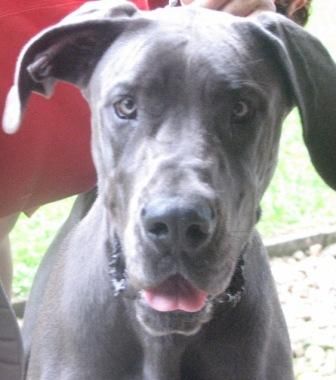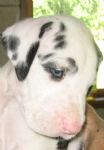Introduction to the Breed
Sub-links for this page

Introduction to the Breed
Brief Historical Background
Historians claimed that there are drawings of dogs resembling Great Danes on Egyptian monuments from around 3000 B.C.
Written descriptions of dogs resembling Great Danes are found in Chinese literature of 1121 B.C. and other sources state that dogs similar to Danes were known in Greece and Rome.
In ancient European history, many references are found about very large dogs of great strength, speed, agility and intelligence that were breed to be versatile enough to be able to “pull a load, take a large pack on its back and quickly deliver goods, while herding and guarding”.
Historical writings about the story of Rome during the 283 B.C., describe dogs like Great Danes as being part of armies and being used as pack animals and in combat against the enemy.
Although it is not clear how the name of the breed came about, the origins of the breed as known today, can be clearly traced back to Germany, where the dogs were used for boar hunting. During this time, dogs of the same breed were given a variety of names such as: ”Deutsche Dogge”, “Ulmer Dane”, “English Dane”, “Danish Dane”, “Saupacker (“wild Boar Hunter) and a variety of other names.
In 1863, during the first dog breeding exhibition in Germany, it become clear that the same dog was assigned different names according to the region where it originated and each region, had adopted a particular colour of Dane as their regional symbol. In 1878, it was agreed to unite the breed which was first called “Deutsche Dogge” (German Dane) and then Great Dane.
Today, the Great Dane is known for its giant size and gentle personality. Due to their beauty and elegance, they are commonly referred as the “Apollo of all breeds”.
Contact Details
Colin & Monica RoebuckBungundarra, Yeppoon, QLD, Australia
Phone : 0408 070 251 - 0412 312 653
Email : [email protected]
